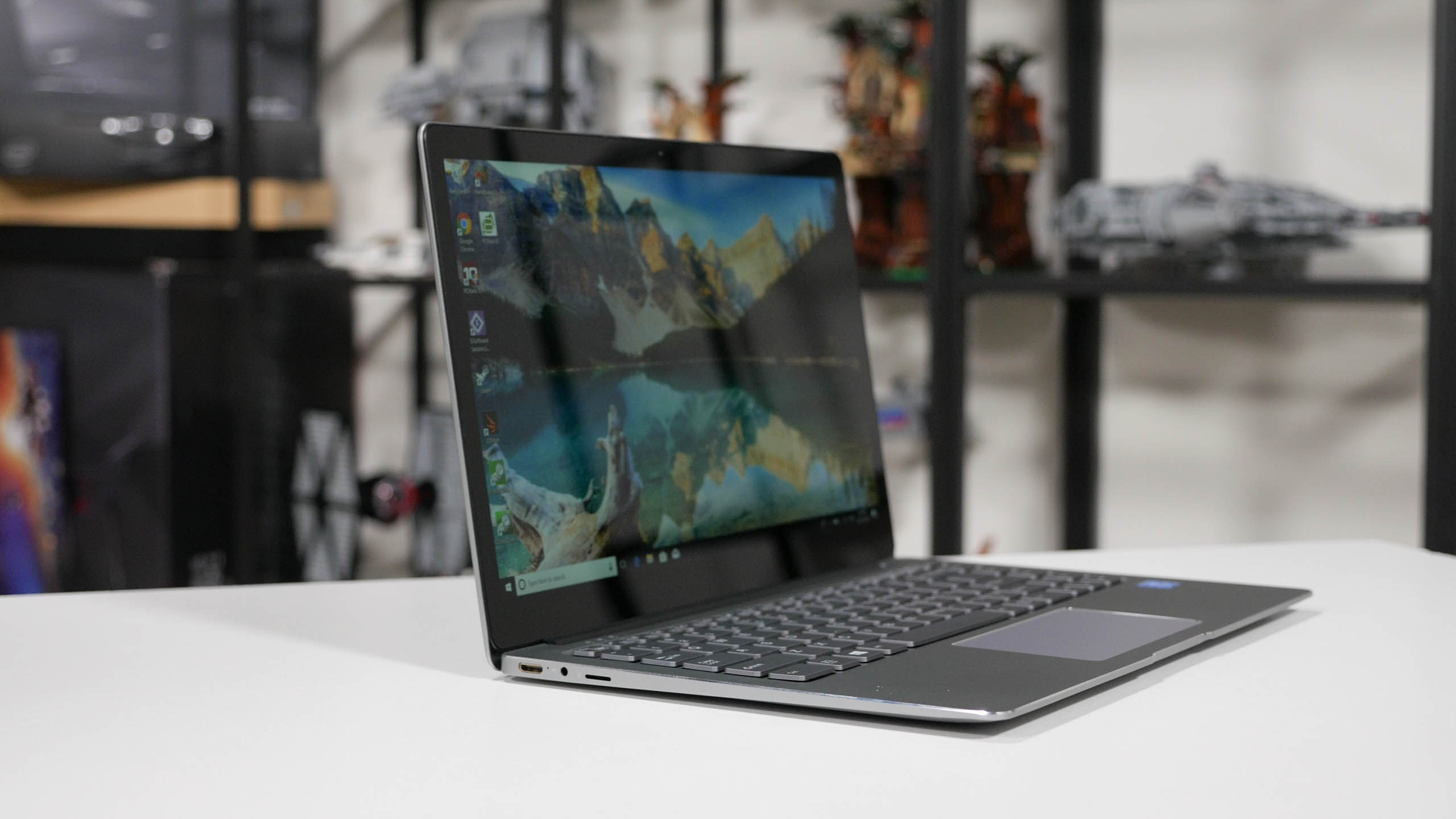More often than not we find ourselves reviewing premium laptops, like beefy gaming machines or sleek ultraportables. Well today, we're going to the complete opposite end to talk about an entry-level laptop that was sent to us out of the blue by Chinese OEM Chuwi.
The Chuwi Lapbook Air is billed as an ultraportable 14-inch machine with a price tag of just $430. This puts it in the realm of some of the cheapest Windows laptops on the market of this display size. Chromebooks are also available for $400 or less, but let's just put those over in the dunce corner for now, because we're mostly interested in true Windows systems.
So what does $430 get you? Well if you're more familiar with top-end laptop hardware, you mightn't have heard of the CPU used in the Lapbook Air. It's the Intel Celeron N3450, an Apollo Lake SoC that uses Intel's Goldmont microarchitecture, designed for low-end power-efficient systems. It's a 6W SoC with four CPU cores and four threads, clocked up to 2.2 GHz with a 1.1 GHz base, plus Intel HD Graphics 500 with 12 execution units clocked up to 700 MHz.
The timing of the Lapbook Air's release at the end of 2017 is a little unfortunate, as it seems they just missed out on the newer Gemini Lake SoCs which use Goldmont Plus cores. The older Goldmont architecture used here is heavily based on Skylake, while Goldmont Plus gets Kaby Lake enhancements. Not a massive difference but still important to note.
The Lapbook Air also packs 8GB of DDR3 RAM and a 128GB SSD, not bad at all in an entry-level system, along with a 14.1-inch 1080p IPS LCD. It's all sounding pretty good so far, and it gets even better when you take a look at the design.
If you've seen entry-level notebooks before, most of them pack bland, plastic, and generally terrible designs. They're built just to contain the hardware and screen for the lowest possible cost. Not with the Lapbook Air, though.
The build is very streamlined and the key feature here is the use of metal on all sides, along with glass protecting the display. It's rare to see this kind of build material on a low-end machine, so Chuwi is definitely targeting those that want a beautiful design for the lowest possible price. Seriously, it wouldn't look out of place in a higher end machine, and it disguises the entry-level hardware inside to perfection.
However, Chuwi's marketing materials do exaggerate the dimensions of this laptop to the point where it's almost false advertising. Yeah, this is a slim machine at this price point, but it's nowhere near as slim as the product pictures make out. This image makes it seem like the front end of the wedge design sits flush on your desk, when in fact it's raised up by a bulge that Chuwi has attempted to disguise through curves and other standard visual trickery.
Later on they claim this front section is just 6mm thick, which I guess is technically correct if you don't count the bulge. My measurements put the real thickness at more like 14mm, which is still respectable for an entry-level system, but it would have been nice if Chuwi presented a more realistic picture of the machine on their website.
Though this isn't the only dodgy stuff you can find on their website. In the performance section they talk about the "Glodmont" architecture and how it "performances faster", and later on they show images that clearly misrepresent the bezel size. Again, the bezels are reasonable for an entry-level product, but on Chuwi's website they are shown to be much slimmer.
Aside from that, the rest of the design is filled with decent inclusions. There's two USB 3.0 ports, a mini-HDMI port, an microSD card slot and a 3.5mm headphone jack, along with a proprietary power connector. I'd prefer a full-sized SD card slot over microSD, but that's just a nitpick.
The keyboard is great, too, with a surprisingly large travel distance and great clicky response in what I imagine definitely isn't the most expensive laptop keycaps you can buy. Each key is appropriately sized and I appreciate the large modifiers and full-sized arrow keys. Having page up/page down and so forth to the right of the enter and backspace keys is a little annoying, but in general the typing experience is great. It's even a backlit keyboard.
The trackpad, on the other hand, is pretty bad. It lacks precision for fine movements and feels quite sluggish to use, as if the polling rate isn't high enough for typical usage. I didn't expect every aspect of this laptop to be great, and it's clear the trackpad is one department that's received less than the deserved attention.
I wasn't expecting the display to be particularly amazing, though in some aspects this IPS panel did perform better than I anticipated. Brightness could be a bit higher, though 266 nits isn't bad, but you do get a decent contrast ratio around 1150:1 and great viewing angles. Chuwi have also done fine in terms of white balance and greyscale, leading to a 7100K temperature average and a 3.02 deltaE average. That's better than a lot of more expensive notebooks.
The problem comes with gamut coverage and this is a standard area where manufacturers look to cut costs. Rather than producing 100% of the sRGB spectrum like you'd want from a decent display, the Lapbook Air hits just 67.4%, so colors look muted and undersaturated. If this was a high-end device I'd slam it for poor color performance, but a lot of entry-level laptops suffer from the same gamut issues, so it's hardly a big problem in this class of device.






